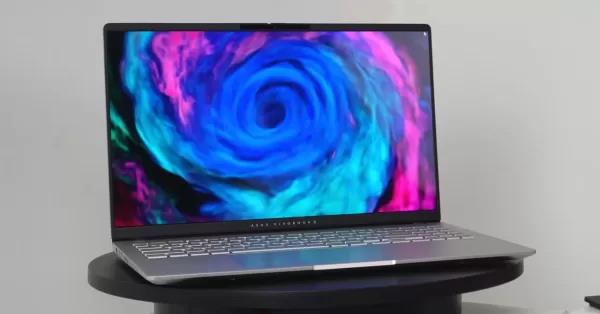ASUS Vivobook S 15 (S5507) Impressions | ASUS’ first Copilot+ PC is promising
The Vivobook S 15 is also the first Copilot+ PC launching in the Philippines.

Unveiled back in May, ASUS is finally gearing up to launch the Vivobook S 15 (S5507), the brand’s first Copilot+ PC. As it will be launched in the Philippines soon, this will also be the first Copilot+ PC that will be released in the country.
For those wondering, Copilot+ is a new lineup of laptops from Microsoft in partnership with various hardware brands. The laptops in this collection are designed for AI as they feature silicon with 40+ TOPS which can support more AI tech. All of these while promising good performance and long battery life. What’s also interesting about these laptops is the fact that the first generation is powered by Qualcomm ARM chips instead of the typical x86 CPUs from Intel or AMD.

Ahead of the Vivobook S 15’s launch, we got to see and get some hands on time with the laptop at ASUS’ HQ in the Philippines. Before we get started with its AI features though, let’s first take a look at its design and other features.
To start, the laptop is quite slim and light as it’s only 1.47cm thick and 1.42kg in weight. This is quite impressive given that it packs a 15-inch 3K 120Hz OLED screen. Though take note that this is a 16:9 display, not the taller 16:10 that ASUS has went with for its other recent laptop releases. Still, even with the 16:9 aspect ratio, the screen is still promising as it looked bright and vibrant when we saw it in person.
Design-wise, the Vivobook looks quite sleek as it features what seems to be ASUS’ new design language for its Vivobooks. The S 15 looks subtler as its logo is quite slim. We’re fans of this new design as we prefer more subtle designs for laptops, though we were hoping to see a darker color option for it like black or at grey.
For I/O, the Vivobook S 15 has good connectivity options as it has 2 USB Type-A, 2 USB Type-C, an HDMI 2.1, a microSD card slot, and a 3.5mm audio jack.

As mentioned above, this laptop is powered by a Qualcomm processor. Specifically, it runs on a Snapdragon X Elite processor which ASUS says can deliver even better performance than a Ryzen 9 7940HS or an Intel Core Ultra 7 155H, at least in certain benchmarks like Cinebench 2024.
During our time with the laptop, we weren’t able to test its capabilities, so we can’t say for certain how it will handle more demanding apps. Still, there is a lot of promise here as ASUS stated that even though it’s an ARM processor, users should still get plenty of performance even with the translation layer. Plus, more and more apps are getting ARM support.
On top of these, the S 15 also has 16GB of RAM and a 1TB SSD which should be enough for most working professionals and for those dabbling in some light content creation.
Battery life also seems promising as ASUS claims that this laptop can last for up to 18 hours. Real-world use will likely be less than that, but anything above 10 hours should be excellent.

The highlight of the Vivobook S 15 as a Copilot+ PC is its integrated AI features that are powered by the dedicated Neural Processing Unit (or NPU). Aside from enabling more AI features, the NPU should make the laptop more responsive when AI is being used as these features won’t need to run on the CPU. This should also have a positive effect on battery life.
While many Windows laptops now have AI features with Copilot, the Vivobook S 15 promises better integration. It also has some Copilot+ exclusive AI features like a live captions feature that automatically translates audio (albeit not perfectly given the limitations of machine translation right now).
There’s also Cocreator which is basically an AI image generator that can be used in Microsoft Paint and the Photos app that can be used even when not connected to the internet. This is a nice feature to have for users who make use of image generation services so that they have an alternative to use when not online.
Along with these, the S 15 also has an Ai resolution upscaler for games and Windows Studio Effects V2 for enhanced noise cancelation and improved lighting for video calls.

Finally, ASUS also has an AI-powered unique feature in this laptop called StoryCube. Essentially, it’s a smart media hub that can automatically sort and categorize images and vidoes. For instance, it can sort images by people or scene. It can also give you a map view or a timeline view (that can be split into the devices that they were taken with). While these features exist in other services, StoryCube can be used offline, making it a promising alternative for something like Google Photos.

Our time with the S 15 was limited, but this laptop already holds a lot of promise, especially for users looking for a premium laptop and wants to test out more AI features for their workflow, as well as for those who already make use of Microsoft’s various AI tech. For now, the only question is if the new Qualcomm silicon that’s powering the laptop delivers on its promise of great performance.
The Vivobook S 15 will be launched in the Philippines soon, and pre-orders for it are available now with a bundle priced at PHP 84,995.

